Martin & Mandy
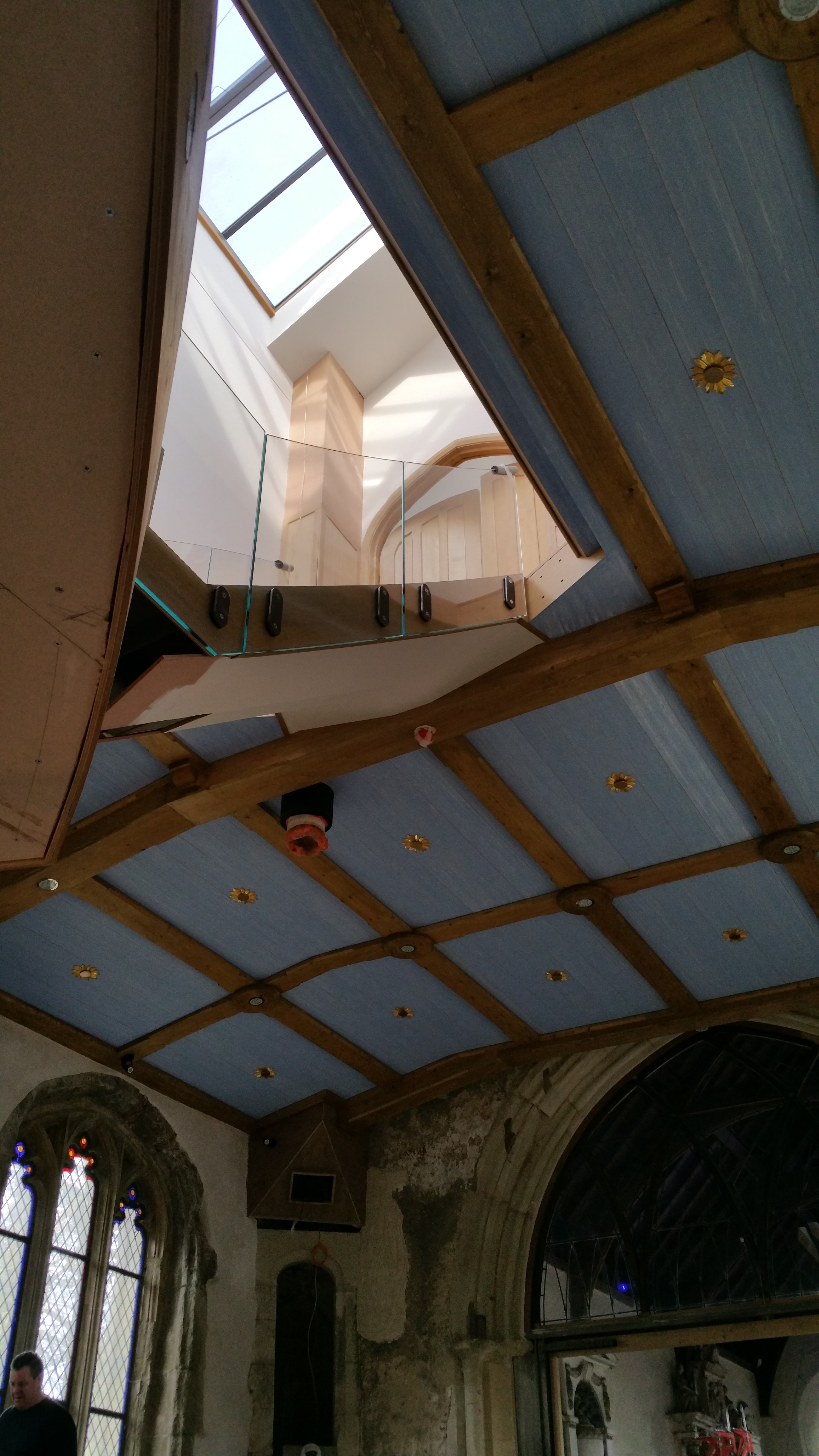
These mad people who fiddle around with redundant church buildings normally commit a couple of cardinal sins as far as I'm concerned. The main one they do is they bung a new floor in that covers the full width and length of the Nave, and this results in all the Nave windows being horizontally cut in half - which looks really awful from the outside - just my opinion but there you go.
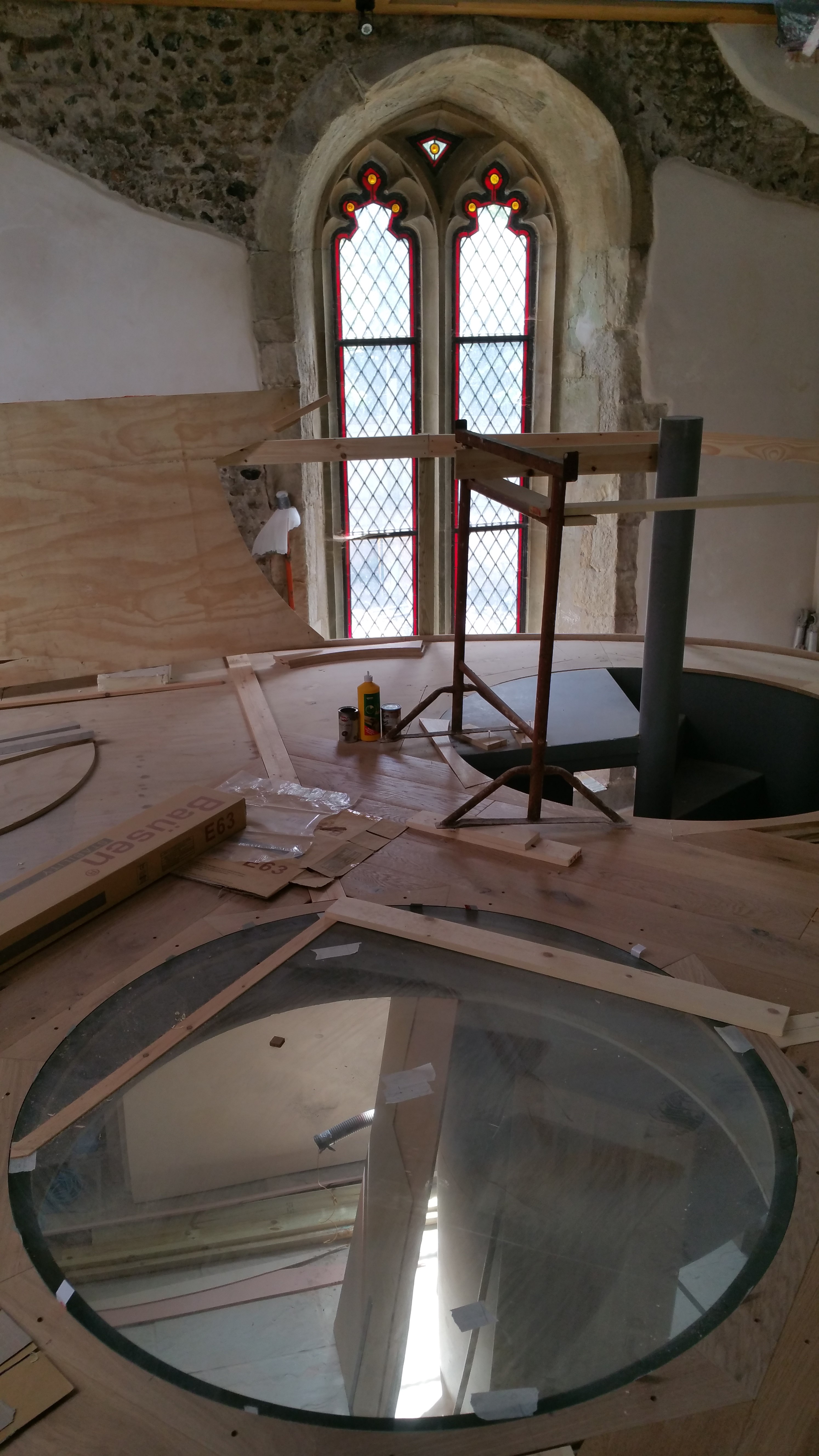
So it should come as no surprise that we have avoided doing this completely, despite being a bit mad, in fact we have managed to end up with a building with eight different levels from the original three but we have made sure that we don't cut through any windows while doing this. You can stand anywhere in the main part of the building and see all the other parts, principally due to the use of lots of glass.
The main staircase has a turret window in the roof that lets light right down onto the floor of the Nave and the glass balustrading allows as much light to pass as possible. We have used glass a lot in this project, even down to retaining the glass between the Nave and the Chancel from the 1950's building work, this keeps the link between the two parts of the building intact.
The mezzanine floor above the kitchen is separated from the walls of the Nave by about a meter on all sides, so we don't go anywhere near the main windows, and in the middle of the floor is a 1.8m diameter glass disk to scare people who don't trust walking on glass, and, of course, to let more light down into the kitchen. This floor is also the way you get to the new floor in the tower, once there you have the west window behind you letting in loads of light and a straight uninterrupted view to the east end of the chancel - which was an amazing bit of planning I can tell you since the main staircase is in the way.
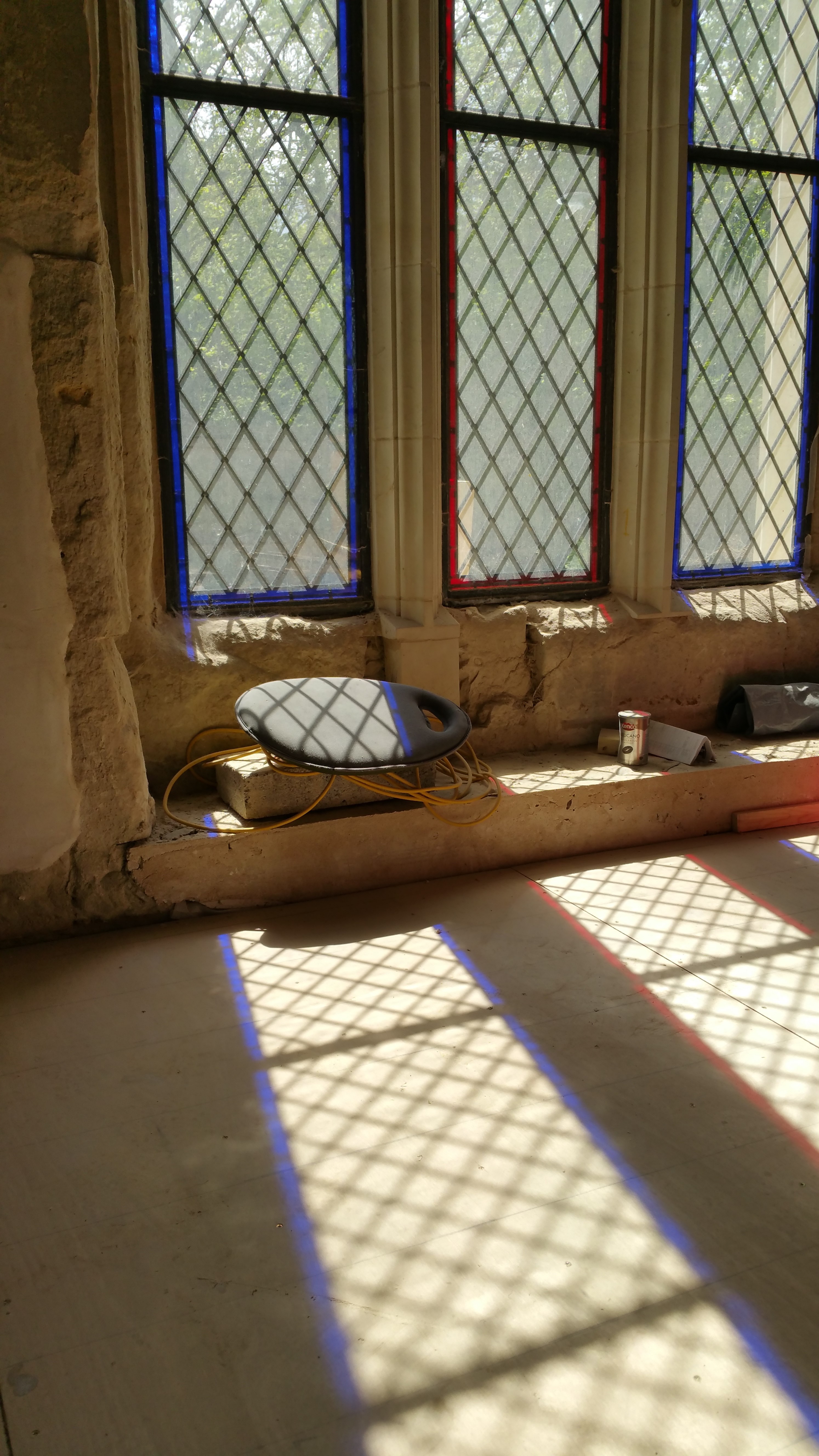
This whole plan allows light to filter through the building from all directions and get as much natural light as possible into the building. This trick works really quite well and has some surprising bonuses, like the main nave windows that have red and blue accent trim which produce glorious patterns on the floor as the sun shines in through the windows.
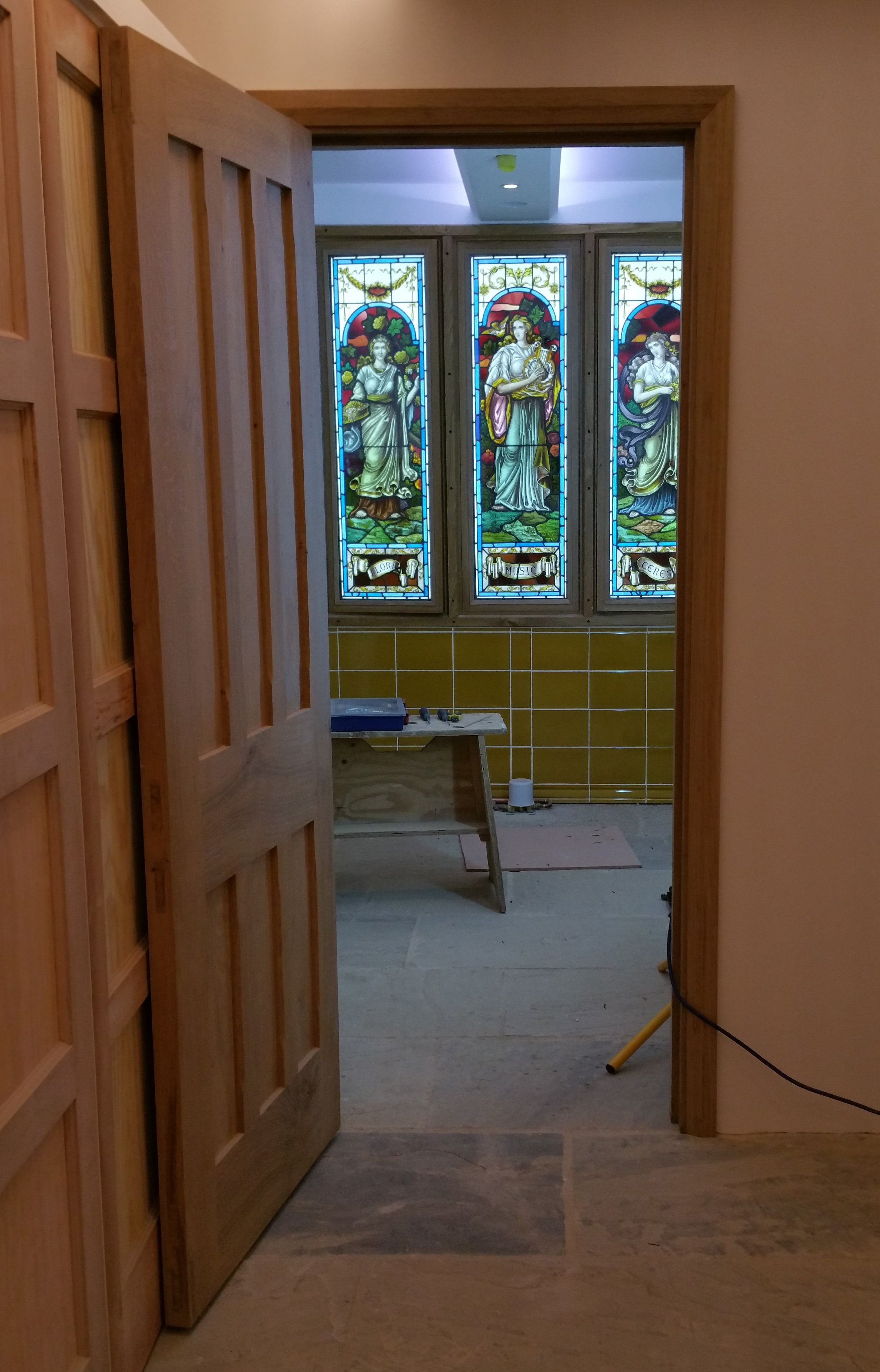
We do have one slight problem here and that's with the basement, which does not have any direct access to the outside world via windows, but we wanted some light down there so we don't feel like we are in a hole in the ground. We have resolved this problem with a triple set of stained glass in the downstairs bathroom with back lighting made of sheets of LED light panels.
We have one other problem and that's the fact that the project is really coming to an end and we are at the stage now where we are working on the final fixings. As such this will be the last regular article we write for the journal until we have time to do some more research for historical stories to tell you. Many people have asked us if we will be publishing all the information we have gathered, to which the answer is yes, so we will let you know when that happens.
We also get asked if we will allow people access to the church in the future and the answer to that I'm pleased to say is also yes! We will continue to do open days and hold other events in the church as the years go by and we find out what's possible. The first of these open days is taking place on Sunday 21st June 2016 as part of the Buntingford Civic Society Heritage Day - you can get a peek inside St Bartholomew's between 11am and 3pm.
For more history and information related to St Bartholomew's visit www.layston-church.org.uk or follow us on Twitter @layston_herts
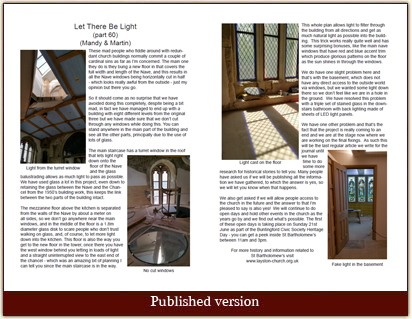
 |
|

